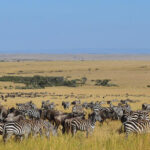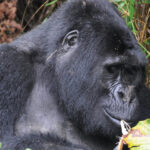Uganda – Background
Uganda, officially referred to as the Republic of Uganda is a landlocked country found in the African Great Lakes region. Uganda is bordered to the east by Kenya, to the west by the Democratic Republic of Congo, to the north by South Sudan, to the south-west by Rwanda, and south by Tanzania. To the south, the county is covered by a great portion of Lake Victoria, shared with Tanzania and Kenya.
Uganda has a total land area of 199,810 km2 (77,147 sq. miles), with a current population of 44,771,667 as of 16th. November 2018, based on the most recent United Nations estimates. The population is equivalent to 0.58% of the total world population. The population density in Uganda is 222 per km2, with 17.1% of the population being urban.
Tourism
Tourism is a major income earner in Uganda and one of the major drivers of development, investment, foreign exchange and employment. The trade contributes about 4.9 trillion Uganda shillings on an annual basis. Tourism is majorly focused on the country’s landscape and wildlife. The tourism industry aims at developing; ecotourism, adventure tourism and cultural tourism.
Uganda is endowed with a diverse array of wildlife including; over 364 species of mammals, 1062 bird species, numerous plant life, culture and landscape. The country has many tourist destinations including 10 national parks; Queen Elizabeth, Rwenzori Mountain, Bwindi Impenetrable Forest, Kidepo Valley, Semuliki, Mgahinga Gorilla, Murchison Falls, Mount Elgon, Kibale Forest, and Lake Mburo National Parks.
Also, Uganda has an inexhaustible list of tourist attractions, they include; Lake Victoria, Lake Bunyonyi, River Nile, Nyero Rock paintings, Murchison Falls, Sipi Falls, Rwenzori Mountains, Mount Elgon, Mabira Forest, Bigodi Wetland Sanctuary, Pian Upe game reserve and Kanyanchu game reserve.
People and Culture
The nation of Uganda was forged by the British between 1890 and 1926. The name Uganda was derived from Buganda – the largest and one of the oldest monarchies in the country. The earliest inhabitants of Uganda were the stone-age people, a mass that was gradually absorbed by the agriculturalists and pastoralists in the first millennium A.D.
By the time the British came, there were more than 30 ethnic and cultural groups in Uganda. The diversity of these ethnic groups can be summarised into four major linguistic categories; the Bantu, Luo, Atekerin, and the Sudanic people.
Religion
Religiously, Uganda is tripartite – comprises of three major religious divisions; the indigenous religions, Christianity and Islam. Christianity is the most dominant grouping, comprising about four-fifths of the population.
The major Christian groupings are; Catholics and Protestants, and the others include; Pentecostals, Seventh-day Adventists, Presbyterians and Baptists. About one-eighth of the country’s population is Islamic and the majority of the remaining people practice traditionalism.





